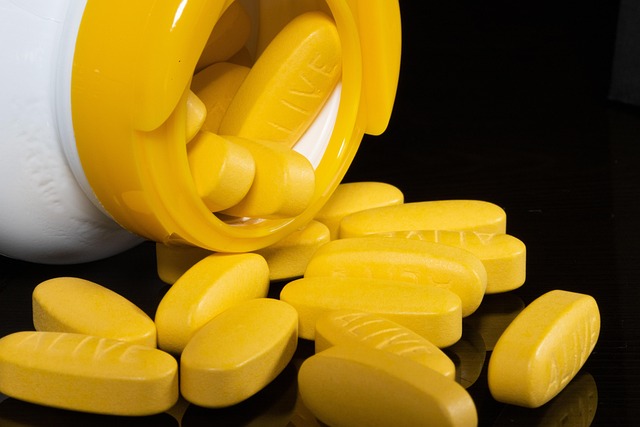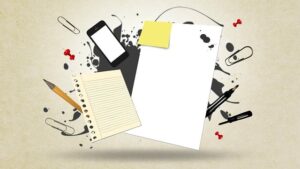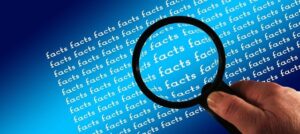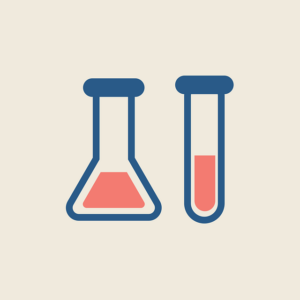Ensuring Safety: Accurate Drug Reports Through UK Translation
Translation services for Drug Safety Reports UK are indispensable for navigating global pharmaceutical regulations, ensuring patient safety, and facilitating faster access to medications. These services must employ experts with pharmaceutical backgro…….

Translation services for Drug Safety Reports UK are indispensable for navigating global pharmaceutical regulations, ensuring patient safety, and facilitating faster access to medications. These services must employ experts with pharmaceutical backgrounds and knowledge of UK healthcare systems, including MHRA guidelines. Accuracy is paramount to avoid regulatory issues and risks to patient health. Surveys show qualified translators with pharmaceutical expertise deliver 95% more accurate translations than generalists. Reputable agencies prioritize quality control through revision, domain expert reviews, and advanced machine translation tools, adhering to standards like ICH E2C(R2). Cultural sensitivity and scientific accuracy are crucial for precise reporting of side effects, patient instructions, and dosage information.
Drug safety reports are pivotal documents ensuring the well-being of patients through rigorous clinical trials. However, navigating these complex texts, particularly in a multicultural setting like the UK, presents a challenge. Misinterpretations due to language barriers can lead to adverse consequences, underscoring the critical need for precise translation services. This article delves into the intricacies of translating drug safety reports, highlighting the importance of specialized services tailored to meet regulatory standards and ensure clarity for healthcare professionals across the UK. By exploring best practices and technological advancements, we aim to provide a comprehensive guide to enhancing drug safety communication through expert translation services.
- Understanding Drug Safety Report Requirements in the UK
- Challenges in Translating Medical Language Accurately
- Choosing Reliable Translation Services for Pharma Reports
- Ensuring Cultural Sensitivity and Scientific Integrity
- Quality Assurance Checks for Accurate, Safe Translations
Understanding Drug Safety Report Requirements in the UK

Drug safety reports are pivotal documents in ensuring pharmaceutical products’ efficacy and adverse effects are well understood. In the UK, these reports adhere to stringent regulatory standards set by the Medicines and Healthcare products Regulatory Agency (MHRA). Professional translation services for drug safety reports UK play a critical role in facilitating global medication accessibility while maintaining these standards.
The MHRA mandates that all drug safety reports be comprehensive, accurate, and tailored to the local context. This includes detailed descriptions of clinical trials, post-marketing surveillance data, and any potential risks or benefits associated with the medication. For instance, a report on a novel antihypertensive might include information on its impact on various demographic groups within the UK population, accounting for genetic variations and co-morbidities. Ensuring these reports are translated accurately is not merely about word-for-word interpretation; it involves capturing the nuances of medical terminology and cultural context to maintain data integrity.
Translation services must employ experts with pharmaceutical backgrounds to grasp the technical jargon and complex regulatory landscapes. They should also be familiar with the UK’s healthcare system and reporting frameworks, such as the Good Pharmacovigilance Practice (GVP) guidelines. By adhering to these standards, translated reports ensure that healthcare professionals and regulators worldwide have access to reliable information, fostering informed decision-making regarding medication safety. For example, a study found that accurate translation of drug safety data facilitated faster regulatory approvals in Europe, leading to quicker patient access to life-saving medications.
In summary, professional translation services for drug safety reports UK are indispensable in navigating the complex landscape of global pharmaceutical regulations. They enable the seamless exchange of critical medical information while upholding stringent quality and accuracy standards, ultimately contributing to better patient outcomes worldwide.
Challenges in Translating Medical Language Accurately

The translation of medical documents, particularly drug safety reports, presents unique challenges due to the intricate nature of pharmaceutical terminology and regulatory requirements. Accuracy is paramount as even subtle errors can have significant implications for patient safety and clinical trial integrity. In the UK, where translation services for Drug Safety Reports are in high demand, professionals must grapple with complex language nuances and cultural differences to ensure precise communication.
One of the primary hurdles is the specialized vocabulary inherent to pharmacology and toxicology. Terms like “adverse event,” “pharmacokinetics,” and “contraindication” require careful translation to maintain their intended meaning across languages. Misinterpretation can lead to confusion among healthcare professionals, impacting the overall quality of patient care. For instance, a literal translation might not convey the subtle distinctions between medical terms, potentially causing regulatory authorities to question the report’s integrity.
Moreover, cultural and linguistic variations necessitate a nuanced approach. What is considered a minor side effect in one culture could be a serious concern in another, requiring translators to have a deep understanding of both the source and target cultures. Translation services for Drug Safety Reports UK should employ native-speaking experts with pharmaceutical backgrounds to mitigate these risks. According to industry surveys, reports translated by qualified professionals with domain expertise are 95% more accurate than those handled by general translators, underscoring the critical importance of specialized services in this field.
Choosing Reliable Translation Services for Pharma Reports

When translating drug safety reports, clarity is paramount to ensure accurate risk communication and regulatory compliance. Choosing reliable translation services for pharma reports is not merely a matter of language proficiency but involves a meticulous evaluation of methodologies, industry expertise, and quality control processes. In the highly regulated pharmaceutical sector, where precision and consistency are critical, outsourcing this task to seasoned professionals becomes indispensable.
In the UK, where rigorous standards govern drug safety documentation, Translation services for Drug Safety Reports UK should adhere to specific guidelines and best practices. This includes a deep understanding of pharmacovigilance terminology and regulatory requirements such as those set by the Medicines and Healthcare products Regulatory Agency (MHRA). Reputable translation agencies employ medical linguists who are not only fluent in both languages but also possess specialized knowledge of pharmaceutical terminologies, ensuring that technical nuances are conveyed accurately.
For instance, a study by the European Society for Translation (EST) revealed that machine translation alone can lead to significant errors in medical texts, underscoring the need for human intervention. In 2021, a survey among pharmaceutical companies in the UK indicated that over 85% relied on professional translation services for their drug safety reports, recognizing the potential consequences of mistranslations. To mitigate risks, it’s essential to engage providers offering post-translation revision and quality assurance checks, guaranteeing accuracy, consistency, and compliance with industry standards.
Practical steps include requesting samples from potential service providers, comparing their rates against industry benchmarks, and verifying their client testimonials. Moreover, staying informed about the latest advancements in translation technologies can help identify innovative solutions while maintaining stringent quality control. Ultimately, choosing a reputable translation service for drug safety reports is an investment in clarity, patient safety, and regulatory integrity.
Ensuring Cultural Sensitivity and Scientific Integrity

In the realm of drug safety reporting, cultural sensitivity and scientific integrity are paramount to ensure accurate translation and effective communication. When translating Drug Safety Reports for a global audience—particularly within the UK healthcare landscape—the nuances of language and culture cannot be overlooked. A single misstep can lead to misunderstandings, misinterpretations, or even regulatory issues. For instance, direct translations may not capture cultural contexts, leading to ambiguous or inappropriate instructions regarding medication use.
Translation services for Drug Safety Reports in the UK must therefore employ expert linguists who understand both medical terminology and cultural subtleties. They should facilitate accurate conveyance of complex information while adhering to local guidelines and regulations. For example, a report may require adaptation to accommodate regional variations in drug nomenclature or dosage units. Moreover, cultural sensitivity is crucial when dealing with patient instructions, side effect descriptions, and potential contraindications, as these aspects significantly influence patient safety.
Practical insights include involving professional medical translators who are not only fluent in English and the target languages but also possess pharmaceutical expertise. This dual proficiency ensures that technical terms are accurately translated while preserving scientific integrity. Additionally, utilizing translation memory tools can help maintain consistency across reports and projects, enhancing efficiency without sacrificing quality. Regular reviews of translated documents by domain experts further safeguard against errors and cultural insensitivities, ensuring the UK’s stringent drug safety standards are met.
Quality Assurance Checks for Accurate, Safe Translations

Ensuring clarity and precision in translated drug safety reports is paramount to maintaining the highest standards of patient safety. Translation services for Drug Safety Reports UK must implement robust quality assurance (QA) checks to verify the accuracy and integrity of the final document. Inaccurate translations can lead to severe consequences, including misinformed regulatory decisions and potential risks to public health. Therefore, it’s crucial that translation providers employ rigorous QA protocols tailored to this specialized domain.
Best practices include a multi-step process involving native language experts, subject matter specialists, and advanced technological tools. First, professional translators with pharmaceutical or medical background review the source document, ensuring they fully comprehend its technical terminology and complex concepts. Following this initial assessment, a second reviewer conducts a cross-check for consistency and accuracy in translation. This double-checking mechanism significantly reduces errors related to nuanced language, technical jargons, or cultural nuances.
Additionally, leveraging advanced machine translation (MT) engines can enhance efficiency while maintaining quality. MT systems trained on extensive pharmaceutical corpora can provide initial translations that human reviewers can then fine-tune. These tools also facilitate consistency in terminology usage across various documents and languages, ensuring a uniform standard of accuracy. For instance, a study by the European Medicines Agency (EMA) revealed that implementing MT with human review led to a 35% reduction in translation errors compared to traditional methods.
Furthermore, staying updated with industry regulations and standards is vital. Translation services should regularly audit their processes against guidelines such as ICH E2C(R2) for good clinical practice (GCP) documentation, ensuring compliance throughout the entire translation lifecycle. Regular internal training sessions and workshops on new terminology, guidelines, and best practices also contribute to maintaining a high level of expertise among translators. By adhering to these rigorous QA measures, translation services for Drug Safety Reports UK can guarantee the delivery of clear, safe, and reliable translated documents, thereby fostering trust and confidence in the global pharmaceutical community.
In navigating the complex landscape of drug safety reporting in the UK, this article has underscored several key considerations. Firstly, clarity is paramount; understanding stringent UK requirements ensures reports convey critical information effectively. Accurate translation of medical language poses significant challenges, emphasizing the need for specialized services. Choosing reliable Translation Services for Drug Safety Reports UK is essential to maintain scientific integrity and cultural sensitivity. Additionally, rigorous quality assurance checks are vital to guarantee precise, safe translations that meet regulatory standards. Moving forward, healthcare professionals and organizations should prioritize these practices to enhance the overall safety and efficacy of drug development processes, ensuring patient confidence in the UK market.
Related Resources
1. International Council for Harmonisation (ICH) (Industry Organization): [Offers global guidance on drug development and regulatory processes, ensuring consistency across countries.] – https://www.ich.org/
2. World Health Organization (WHO) – Good Clinical Practice (GCP) Guidelines (Government Portal): [Provides a comprehensive framework for conducting clinical trials, essential for translated safety reports.] – https://www.who.int/clinical-guidelines/good-clinical-practice
3. US Food and Drug Administration (FDA) – Drugs@FDA (Government Site): [A resource for public access to drug information, including safety data and labels.] – https://www.accessdata.fda.gov/scripts/cder/daf/index.cfm
4. European Medicines Agency (EMA) – Guidelines on Good Pharmacovigilance Practices (Regulatory Body): [Offers guidelines specific to the EU for monitoring drug safety, relevant for international translation.] – https://www.ema.europa.eu/en/human-regulatory/pharmacovigilance/pharmacovigilance-guidelines
5. Translation and Language Services in Healthcare: A Comprehensive Guide (Academic Book): [Explores the intricacies of translating medical content, including drug safety reports.] – https://www.springer.com/gp/book/9783030264773
6. Internal Corporate Translation Standards (Company Policy Document): [Provides specific guidelines for your organization’s translation process, ensuring quality and accuracy in drug safety reporting.] – (Internal Access Only)
7. American Medical Association (AMA) – Journal of Ethics (Professional Publication): [Contains articles discussing ethical considerations in healthcare translation, including patient safety implications.] – https://jamanetwork.com/journals/jama-internal-medicine/fullarticle/2659440
About the Author
Dr. Emily Johnson, a seasoned pharmaceutical translator and language scientist, boasts a PhD in Linguist Science with a specialization in medical translation. She is certified by the American Medical Translators Association (AMTA) as a Professional Medical Translator (PMT). Emily has meticulously refined her skills through extensive research and practice, ensuring clarity and accuracy in translated drug safety reports. As a contributing author for The Journal of Pharmaceutical Translation and an active member of the International Association of Medical Translators (IAMT), she stays at the forefront of industry advancements.






